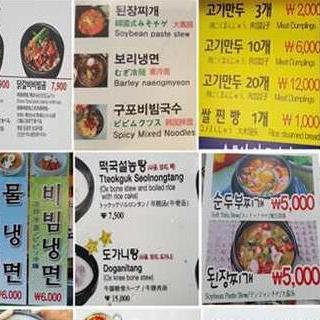
介绍:
20160715ou 一中两外锵锵三人行
今日话题: 韩国的那些奇葩菜名儿
《韩食菜单外文实际情况调查报告》显示,首尔主要景点32.4%的中文菜单有1处以上的严重误译。 另,英文菜名也有误译情况。
BK: Menu translations – opportunities for creativity and artistic expression, and also for utter failure.
WY: A recent report says that South Korea has set up a government task force aimed at tackling embarrassing translations of Korean dishes. Officials from two ministries have teamed up to discuss the standardised names for some of the country’s cuisine, not only in English, but also in Chinese and Japanese.
NL: I think both in South Korea and many other countries around the world, the translations of food in particular seem to present difficulties, and I don’t think it’s that surprising, because when you think about the names of food dishes in any language, they’re sometimes unclear, they don’t really describe what the content of the dish is, it’s more of a name for historical or cultural reasons, and that’s why when you rely on translation computer software, it sometimes doesn’t quite get the meaning across.
WY: Yeah, and one of the perfect examples is like ‘Dynamic Stew’. Guess what it is?
NL: It sounds very exciting.
WY: It is actually pollock.
NL: You might be disappointed then, you see, when you actually receive the dish, at how non-dynamic it is.
BK: There’s a lot of those. The ones that seem to be the most familiar, at least for us, since we are English-speaking, are those found in East Asian countries.
NL: Yeah, I think, as you said, signs in daily life can be very amusing, but I think those ones, because of the context in which you see the sign, or the location of it, even if it’s funny, usually you can work out some kind of meaning from it, or you can deduce what it’s trying to say.
WY: Back in the year 2012, in China, a list of correct translations of around 2,000 Chinese dishes’ names has been published. One dish is called ‘Four Happy Meatballs’. It is simply pork balls.
BK: Okay, that makes a little more sense, there.
WY: And other examples are like ‘Wood Mustache Meat’. So the correct translation should be the Moo Shu Pork, or omelette and fungus with shredded pork. And the other one is ‘Sixi Roasted Husband’.
BK: Yeah.
NL: Probably wouldn’t order that.
WY: That is very strange, but the correct translation should be ‘deep-fried sliced gluten with peanuts, day-lily, fungi and mushrooms’.
NL: That’s the key, it’s the description, rather than just the name, that’s the helpful part here.
WY: Yeah, and the other example is like ‘Weird Germ Soup’. It’s actually mushroom soup.
BK: Yeah, so maybe you could have the colourful name, and then have a list of ingredients, or the main ingredients, that could probably do a lot to help out.
WY: Or maybe putting a name that can catch people’s attention, but actually with a little explanation under it.
NL: Maybe that’s the way forwards, here.
BK: That, plus a picture, there.
大家还在听

